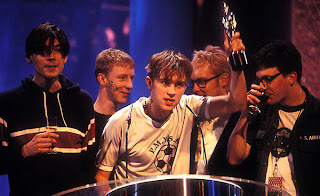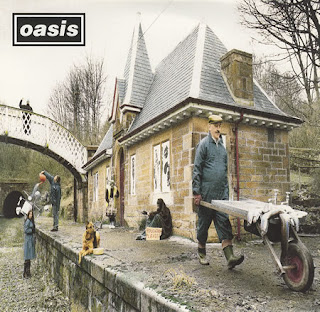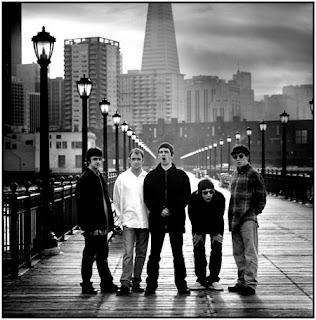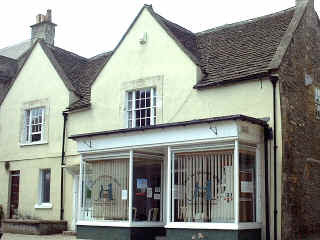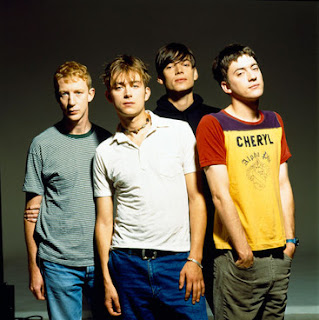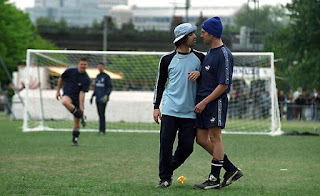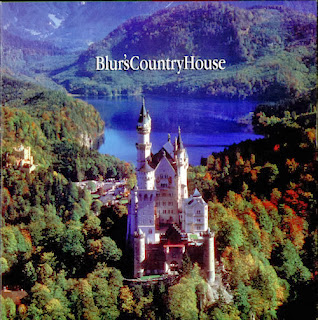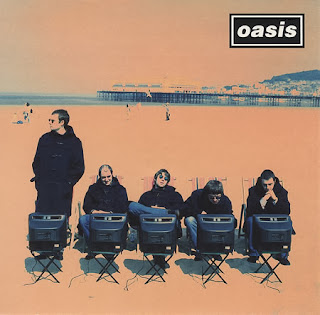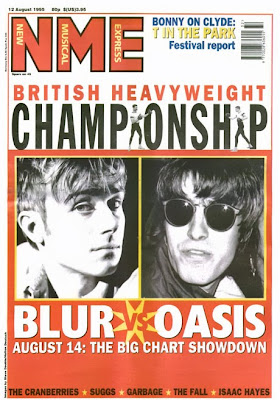(continued from HERE)
As 1994 turned into 1995, something exciting was coming to life within the music world as Blur, Oasis and lots of others were beginning to shake things up in a massive way. By this point, aged ten I had become a fan of both aforementioned bands, although I wasn’t ignoring the other stuff in the charts. Back then, there seemed to be something for everyone. It’s why I argue that the 90’s was the best decade of all time, since it had absolutely everything. Just have a look at the singles chart back in 1995. There was the phenomenon of indie going overground, a time when the alternative was becoming a huge part of the mainstream. There was also electronica, american rock, trip hop, cheesy euro-dance, as well as the AOR acts, rap groups and weak boybands. There was so much to choose from. The radio also seemed to reflect this, even the local station GWR was playing a varied mixture of stuff. Well varied compared to the horror that the station descended into a few years later before being bought out by the ghastly Heart FM. Radio One had a bigger playlist and would play stuff that GWR’s presenters wouldn’t have been aware of. So even though the radio reception was weaker for Radio 1, and the presenters seemed to talk a lot more, it became my station of choice. However, I still settled for GWR whenever I couldn’t get a good R1 reception, because in 1995 it didn’t sound that bad to me.
As I’ve mentioned in previous columns, my Dad managed a club in Corsham, where the DJs at the time would play a mixture of dance hits, club mixes of pop songs and house music. Of course this made me think of how cool it would be to get paid for playing records, and yes I did indeed want to be a DJ one day. But what sort of a DJ was I going to be? I had a major love for classic and alternative music but the sound of the clubs was beginning to make an impression on me. My dad had also developed a fondness for dance music, perhaps it was from running a club or perhaps it was his way of showing that his age didn’t mean he was entirely out of touch. Of course sometimes he was a bit: he was impressed by a mixtape that included a ridiculous amalgamation of The Grid‘s ‘Swamp Thing’ and George Formby‘s ‘When I’m Cleaning Windows’. At this time I myself was (for some unknown reason) impressed by this as well, perhaps because I thought the songs on the tape had all been mixed by the club’s resident DJ. But after hearing the Grid/Formby mash-up on the radio, I realised that this was not the case.
I’d discovered Blur the year before, and now in February 1995 the band sensationally swept the board at that year’s memorable Brit Awards. You could feel the excitement everywhere, and there was a sense that this group had set a new standard. It felt like this was how things were going to be from then on. It was too good NOT for it to stay that way. Well, that’s how it felt at the time anyway. The day after the Brits, the band were household names as well as critic’s favourites, and became part of the British culture that had inspired ‘Parklife’. I had a recorded copy of it on tape, but this was undoubtedly THE album of the time. So essential that I NEEDED to own a proper copy, and indeed I did end up owning one, purchased on cassette from WH Smith’s in Swindon. From what I can remember, I also bought the Simple Minds single ‘She’s A River’, which I probably got because I might have had a pound left after buying Parklife. I can’t think of why else I would have bought it at the time, since I didn’t have a clue who Simple Minds were.
I was lucky enough to be around as Britpop was on its way to becoming the most phenomenal musical movement in years. As a ten year old kid, it seemed even more thrilling to me. And it all happened at just the right time to influence my life in a massive way…
During the same week that Blur swept up at the Brit Awards, I also made my debut as a DJ aged just ten years old. My Dad managed a club, and it was there where I would become interested in the art of spinning records and filling dancefloors. I also became fascinated with the concept of mixing two songs together, something that I was hearing on dance compilations as well as from the DJs at the club. With a function room upstairs the club was also the ideal venue for my brother’s 7th birthday party, and if I could learn how to use the decks and the mixer, then I would be the DJ. It took a while, but I eventually learned. My DJ debut at that party was by no means a demonstration of turntable wizardry, since I was just crossfading tracks rather than mixing the beats together, and I was also using one turntable, a CD player and a tape deck. Plus how could I have mixed the music that I was playing? It was hardly Jive Bunny.
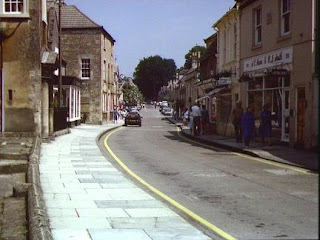
‘Strawberry Fields Forever’ failed to get a room of six year olds rushing to the dancefloor, and I couldn’t figure out why. My attitude was “It’s a great song, so dance to it!”. None of my Bowie records inspired any movement either. There was a slightly more enthusiastic reaction to Blur, but in the end I had to resort to sticking on a chart hits compilation and breaking up the songs with bits from a party mix tape. I also recall having a terrible hairstyle and a brightly coloured waistcoat on, since my Dad would frequently wear one behind the bar and I was very much like a mini version of him. I also remember refusing to dance with an admiring girl that my brother had invited from his class. I was a bit shy yes, plus a three year age gap feels like a whole generation to a ten year old. But I took the stance that a DJ shouldn’t dance. It’s uncool. I play the records, THEY will dance. Perhaps because I wasn’t exactly cool and popular at school, it meant that I needed a way to feed my ego. DJing gave me that. And when I eventually became quite good at it, the ego became more of a confident sense of achievement. But I didn’t become any good at it until I had learned more about dance music and embraced house.
In early 1995 I would just play novelty dance hits, new chart singles, well known classics and songs from my favourite new bands Blur, Suede and Oasis. I had at that point only heard one Oasis single ‘Whatever’, along with its electrifying B side ‘It’s Good To Be Free’, but very soon a car journey to Yorkshire and the arrival of the band’s next single would make them my heroes…
It was March 1995. I had been listening to Blur’s ‘Parklife’ constantly, along with the Oasis single ‘Whatever’ and Suede’s ‘New Generation’. My Auntie Julie and Uncle Justin were both fans of these bands too, and Julie owned a copy of the debut Oasis album ‘Definitely Maybe’. Along with my Mum, my younger brother, Justin and Julie, I came along to visit my Auntie Karen and Uncle Phil, who lived in Barnsley with my three cousins. This involved a long car journey during which my ‘Parklife’ tape became a singalong road soundtrack, but we also had to listen to one of Justin’s tedious M People albums along the way. He always did have a varied taste. Everyone agreed that Freak Power‘s ‘Turn On, Tune In, Cop Out’ was “shite”. But when Julie put on ‘Definitely Maybe’, hearing those songs for the first time was too exciting to put into words. It blew my mind and confirmed that this band were something truly special.
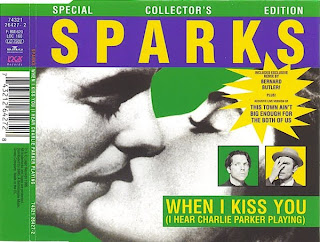
When we eventually got to Barnsley, the first thing I did was purchase a blank tape so Julie could record a copy of it for me. There are lots of things I remember about that week, like my Uncle Phil trying to convince me that Sting‘s solo stuff was good, and a birthday party disco for Karen and Phil’s birthday, where I heard Green Day‘s ‘Basket Case’ for the first time. I can remember hearing Michael Jackson‘s ‘Thriller’ album being played a lot that week, and also recall visiting a Barnsley record shop and finding an interesting item in their bargain bin; a CD copy of the Sparks single ‘When I Kiss You (I Hear Charlie Parker Playing)’. Considering I hadn’t heard the song, it was a very random purchase for a ten year old to make. That week and the car journey that preceded it will always have a place in my memory, perhaps because life changed after hearing ‘Definitely Maybe’. After Blur had won all the Brit awards that year, to a certain extent, Oasis were in their shadow, but after hearing that debut album I just knew they’d become extraordinarily huge.
April of that year saw the release of a new Oasis single, the first to be taken from their second album. ‘Some Might Say’ had all the giddy excitement and wide eyed optimism of the time, and hearing it 18 years on instantly evokes nostalgic memories of a hugely exciting time for British music. Growing up with these brilliant new bands of the time was vital. My interest in music had been growing for a couple of years, and now I found myself witnessing the rise of guitar bands during a time when the underground burst its way in to the mainstream, the most thrilling time for popular music since punk. As well as a fantastic live act, the off-stage antics of Oasis had made it into the music press, and soon the tabloids would pick up on the band.
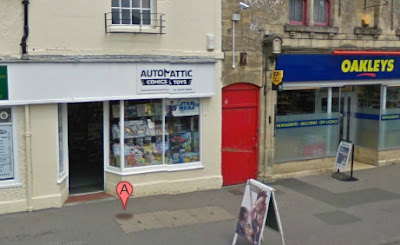
There was a small comic shop in Corsham called American Dream, which also sold a small range of CDs, the only place in the town that you could buy music from. I bought ‘Some Might Say’ from there during the week it was released and played it repeatedly when I returned to the nearby flat my Dad occupied at the club he managed. I remember trying to get my head around that weird sleeve and what the hell it was all about, and then the lyrics helped it all make sense “the sink is full of fishes… standing at the station in need of education…”. I also remember Paul the barman at the club asking if he could have a listen to it on the music system in the bar, but it wouldn’t have been a favourite of my Dad’s. Although there would soon come a time when the bar would HAVE to play Oasis, my Dad dismissed them as well as Blur, saying that they were both the same thing and were both just “boy bands” copying groups from the past. He seemed to be the only person who disliked these groundbreaking bands at the time, although now he’d probably recognise both as the greats of the era.
‘Some Might Say’ made it to number one and confirmed that Oasis had not only broken into the mainstream, but were beginning to make their presence known. The CD also featured three additional tracks which left me stunned that a band could just throw such incredible songs onto the B sides of singles. Here they actually perfected the art of the four track CD single, and years later it seems to stand as the format’s greatest moment. The storming ‘Acquiese’, featuring the vocals of both Gallagher brothers, and ‘Talk Tonight’ allowed me to hear Noel singing for the first time, since at that point I only owned ‘Definitely Maybe’ and the cassette edition of the ‘Whatever’ single that didn’t feature ‘Half The World Away’. Liam blasting through ‘Headshrinker’ remains a mind blowing moment and one of his finest vocals.
Another single I purchased from American Dream at around the same time was the breathtaking ‘Haunted’, an old Pogues b side reprised as a duet between Shane MacGowan and Sinead O Connor. It was good hearing Shane’s gruff tones countered by such a delicate female voice, and what a lovely song too. Should have received more airplay, and should have been a bigger hit. Can’t complain though, in 2013 it wouldn’t have got anywhere near the charts. My fondness for The Pogues continued, and at some point during 1995 I borrowed various Pogues albums from the local library to record and add to my tape collection. These included the superb debut ‘Red Roses For Me’, and the not-so superb ‘Waiting For Herb’, an LP recorded after Shane had been booted out of the band. ‘Sitting On Top Of The World’ and the beautiful ‘Tuesday Morning’ were my favourites from that one… The other tracks paled into insignificance.
‘Some Might Say’ was also included on a Various Artists compilation album I bought around about the same time. As well as featuring ridiculous but fondly remembered novelty fun such as Scatman John and total bilge like that year’s Eurovision entry by the appalling Love City Groove, the cassette also featured the massively infectious ‘A Girl Like You’, my introduction to the magnificent talent of Edwyn Collins. The reason I began buying compilations of chart hits was because I was slowly but surely learning the art of DJing, and May ’95 saw the 50th anniversary of VE Day, an occasion that the country seemed to revel in. The club was celebrating the event with a day of drinks promotions and a 1940’s themed disco throughout the day. There were only so many Glenn Miller records and WW2-themedJive Bunny mixes I could play, so as the day went on the disco gradually focused on more contemporary stuff, including some of the chart hits of the time (Rednex, N-Trance and dance remixes of Celine Dion tracks) and a double LP of summer-themed tunes from The Beach Boys, Katrina And The Waves and Mungo Jerry. Must have been a hot day. But I can remember that being the day that I could finally consider myself to be a good DJ and being able to operate the decks and mixer without making too many errors. Soon the club’s resident DJs would be sacked and replaced by a new higher profile DJ who did the Thursday and Friday nights, but taking control of the Saturday night disco would be me. And I was only 10 years old at the time. Great days…
June 1995 was memorable, as was the rest of the year. As is sometimes the case now with manufactured boy bands, when a group became a pop phenomenon, publishers would see an opportunity to cash in by releasing “unofficial” magazines featuring stories and lots of posters. In a short space of time, Blur had come a long way and by this point had become a household name after their triumphant night at that year’s Brit Awards. I was still buying Smash Hits, which at this point was featuring more of Blur, Oasis and a growing number of other guitar bands. Because of the pull out posters that came inside the magazine, my bedroom walls were covered with Blur and Oasis, as well as a few Chelsea football posters. At the time all I knew was classic music from the past and the chart hits of the day, so Smash Hits didn’t seem like it was missing anything. It featured people I liked and people I didn’t like. I remember wishing that guitar music would become big enough to take over the magazine and banish all those rubbish boy bands from its pages. It wouldn’t be too long before that came close to actually happening.
As the summer holidays were approaching, we were entering the last few months at primary school, and to mark the occasion the class and our teachers went camping in the Wiltshire countryside for a week. It also happened to be the week of my 11th birthday. The clearest memories I have of this included bringing a Blur magazine on the trip and reading it a lot. I remember me and my mate (and tent partner) Mark putting on some “hair gel” in an attempt to look smart for the evening, only to find that it was some sort of weird gel shampoo. And since someone as legendary as John Peel can write about shitting his pants on a bus in his autobiography, then I can also admit to a toilet-related accident of my own that happened during a long walk back from Stonehenge. I have recently uncovered some photos from this trip, taken back in 1995. As soon as I’ve figured out how to work my scanner, those will appear in a future column maybe. I also found photos taken on my brother’s birthday party that marked my debut as a DJ.
Although I wasn’t keen on some of the boring releases from older AOR artists and the squeaky clean boy bands who had formed in the wake of Take That, there wasn’t a lot of music I disliked back then. As a kid growing up in the mid 90’s, I would hear all sorts of different stuff on the radio, and although the overall selection would be limited, there were enough different genres played to give the mainstream radio stations a sense of variety. I say “mainstream” stations as if there were any other choices back then. There weren’t.
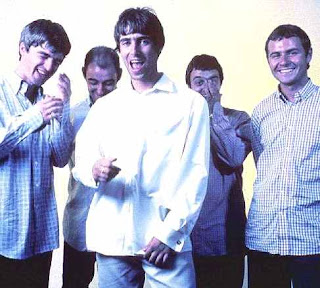 In the UK during the 90’s there were a lot less radio stations around than there are today, so because there were no specialist stations where people could hear their preferred type of music, everyone had to listen to the same thing, meaning that the main stations had to cater for everyone. This meant that as well as the main pop hits, they’d also have to pick a number of indie, dance and other tracks. In fact most people would listen to Radio 1 or their local commercial station (ours was Wiltshire’s GWR FM). There were no specialist stations apart from Classic Gold (which played hits from the 50’s, 60’s and 70’s), Classic FM (which played classical) and the dance orientated Galaxy 101. Radio 2 was seen as old, uncool and out of touch, as were the local BBC stations. All the other stations were all on MW or LW frequencies, which meant poor sound quality. So by default most people listened to Radio 1 or their local station. Everyone from different walks of life would all be tuned into the same thing. It was something that couldn’t happen in 2013: lots of different types of music being played in the same place, with lots of different people listening. The closest thing you could get to one nation under a groove.
In the UK during the 90’s there were a lot less radio stations around than there are today, so because there were no specialist stations where people could hear their preferred type of music, everyone had to listen to the same thing, meaning that the main stations had to cater for everyone. This meant that as well as the main pop hits, they’d also have to pick a number of indie, dance and other tracks. In fact most people would listen to Radio 1 or their local commercial station (ours was Wiltshire’s GWR FM). There were no specialist stations apart from Classic Gold (which played hits from the 50’s, 60’s and 70’s), Classic FM (which played classical) and the dance orientated Galaxy 101. Radio 2 was seen as old, uncool and out of touch, as were the local BBC stations. All the other stations were all on MW or LW frequencies, which meant poor sound quality. So by default most people listened to Radio 1 or their local station. Everyone from different walks of life would all be tuned into the same thing. It was something that couldn’t happen in 2013: lots of different types of music being played in the same place, with lots of different people listening. The closest thing you could get to one nation under a groove.
With Britpop rising, daytime radio would allow a limited number of indie songs on the air, and because those songs were the only indie tracks being played regularly, the indie fans would focus on those songs more than they would have if the whole playlist was made up of that style. They stood out. Plus the fact indie music was played on mainstream radio meant that the neutrals had a chance to hear it alongside everything else and it even meant that some pop fans were converted to indie. I would easily describe my 11 year old self as a neutral listener who would listen to all genres, but I had definitely become more of an indie and dance fan, although I hadn’t yet developed a distaste for cheesy pop music. I was lucky to have grown up during a time where everyone was hearing and buying such a diverse range of music. It enabled me to sample everything that was on offer and make my decisions as to what I liked the most. If I’d been unlucky enough to grow up in the current decade, I’d have no chance of hearing indie within the mainstream.
Because my tastes were varied and the musical climate was too, the DJ sets I did at the club my Dad managed always delivered a good mixture of stuff. A few examples from around about June ’95-ish… Rednex – ‘Cotton Eye Joe’, N-Trance – ‘Set You Free’, Paul Weller – ‘The Changingman’, Perfecto Allstarz – ‘Papa’s Got A Brand New Pig Bag’, McAlmont And Butler – ‘Yes’, Alex Party – ‘Don’t Give Me Your Life’, Edwyn Collins – ‘A Girl Like You’,The Bucketheads – ‘The Bomb! (These Sounds Fall into My Mind)’, The Boo Radleys – ‘Wake Up Boo’, Strike – ‘U Sure Do’, Grace – ‘Not Over Yet’, Oasis – ‘Some Might Say’…
OK, Rednex were ridiculously shit, but at least they weren’t dull. Nowadays rather than exciting variety, what’s classed as the “mainstream” is mostly boring homogenised nonsense that all sounds the same. In fact there isn’t really a mainstream anymore, certainly not one that represents the many different sections of listeners that make up this country. Everyone likes to stick to their own thing and hear more of it, rather than having to put up with stuff they don’t like while waiting for something good to come on. Indie fans listen to the indie stations, commercial pop fans listen to what are now commercial pop stations, and so on.
We’re not all tuned into the same thing and experiencing each other’s music anymore. In the 90’s it was a shared experience and most of the nation was the audience. Today, it feels like we all live in our own little worlds when it comes to music. Britpop was to be the last time that the nation would unite and sing together in harmony… What a fantastic time to be a kid.
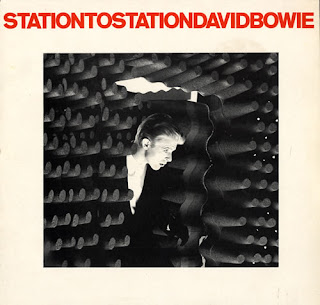
Back then, I was under the impression that the records David Bowie released from 1971 to 1974 were the main ones that needed to be heard. That changed when I bought a cassette of ‘Station To Station’ from the HMV in Bristol. The opening title track was an extraordinary mini opus that took my ears on a journey, a paranoid multipart groove that was one of the most infectious things I had ever heard. The music on that record taught me yet another side to Bowie, and despite being only six tracks long, it delivers more than enough in terms of essential music. It’s a masterpiece, and that’s a fact.
By this point I was fascinated with this absolute polymath. Not only did I recognise Bowie as a genius, but I was convinced that he had some sort of superhuman ability to create magic through music. I became so fascinated with him that I even sat down to watch the whole series of ‘The Buddha Of Suburbia’ just to hear Bowie’s soundtrack. I didn’t have a clue what was going on, I just waited patiently to catch the occasional sound of my idol. Another notable memory I have from that period was belting out ‘Modern Love’ at a karaoke night that took place at the club. Some will disagree, but I still think that’s a great song.
18 years ago, I was enjoying some life-changing moments, in more ways than I realised. Primary school was over, and following the summer holidays I would be starting “big school”. Back then the summer holidays seemed to last forever, and in retrospect part of me wishes that particular summer COULD have lasted forever. John Major was PM (although a Tory in charge is never a good thing), life was simple and exciting, and in August one big question was on everyone’s lips… I doubt there’s many people in this country who didn’t get asked “Who do you prefer, Blur or Oasis?” in the glorious summer of 1995, and for a good while afterwards. It was almost as if your answer would determine what sort of a person you were. From August 14th to the 20th, music fans from around the country were rushing out to their nearest record shops as Blur fought Oasis in a headline grabbing chart battle. The Essex band’s ‘Country House’ and the Manchester group’s ‘Roll With It’ were both released the same week during a time when a fierce rivalry between the two was at its most intense.
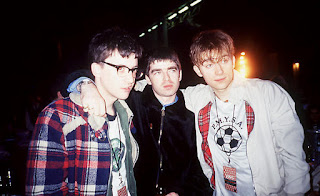
”The Battle of Britpop” may have been a media-stirred and rather shallow way to settle scores between two bands who had nothing in common except for the quality of their musical output, but it brought Britpop to the forefront of the British press and to the attention of many of kids waking up to music. The tabloid press turned it into a war that was as much about British class and regional divisions as it was about music. Oasis the working class northerners, Blur the posh student types from the South. The chart war captured the public’s imagination and gained mass media attention in national newspapers, tabloids, and even the BBC News. Provoked by Oasis, Damon Albarn turned a petty feud into a national debate… “Yes I did move our release date to match theirs! The main reason was that when Oasis got to Number One with ‘Some Might Say’, I went to their celebration party, y’know just to say ‘Well done’. And Liam came over and, y’know, like he is, he goes, ‘Number fookin’ One!’, right in my face. So I thought, ‘OK, we’ll see…’”
My clearest memory of it all was going to Our Price in Bath on the day before the singles charts were announced, and buying both singles. Initially I thought both weren’t the best either band had released, ‘Country House’ was frankly a bit silly, and ‘Roll With It’ seemed to lack the weight of their previous hits. But both grew on me and being an excited 11 year old caught in the thrill of Britpop, it would have seemed like missing out if I didn’t buy at least one of the singles. On the day I was going to decide which one to buy on CD, the Blur one was cheaper at £1.99, but at £2.99 the Oasis one had more tracks, and their b sides were known to be fantastic. In the end I purchased both on cassette. That evening was the yearly carnival in Melksham, which went past the end of my street and which that particular year I remember not really paying much attention to because all I wanted to do was get back home and play these new Blur and Oasis singles. So exactly 17 years ago today, the chart results were announced. I remember that instead of doing a recap of the top 40 before playing the week’s number one song, they did it before the top 2. “So the song at number two this week is… Blur” followed by a pause “… or Oasis…”
Blur won, selling 274,000 copies to Oasis’ 216,000 – the songs charting at number one and number two respectively. Blur were presented by their record company with a framed copy of the charts. The inscription read: “‘Better than Blur any f—ing day of the week’, Liam Gallagher, Glastonbury Festival, 1995.” Underneath that it read, “NOT TODAY SUNSHINE!” A few weeks later things had become very nasty. In an interview with the Observer newspaper Noel Gallagher said “I hate that Alex and Damon. I hope they catch Aids and die.” Lovely…
So back in school, what did I answer when asked THAT question approximately 130 times every hour? For me it was and still is impossible to choose between Blur and Oasis, because both have had such an equally huge impact on my musical life, and did so back then too. Ugly rivalries aside, there were plenty of positive things happening…
It was a time when youngsters, adults and all of the general public were given the chance to hear all kinds of music, and able to choose what they liked the most. Britpop was truly the ultimate gateway genre. I believe that every person has a true music fan inside of them, and hearing something amazing at the right time is what unlocks that passion. Most of the kids who were buying East 17 and Take That singles probably grew up to become casual, unconcerned passive listeners, who don’t give two shits about what they listen to and who probably own a small pile of CDs at the very most. Whereas a lot of kids who got into Britpop then went on to discover less commercial indie music, which in turn led them down many weird and wonderful avenues and into alternative music’s obscure past. I know that I probably wouldn’t be sat here now writing this column if the golden period of the mid 90’s didn’t happen. I certainly wouldn’t have my massive and eclectic record collection either. Vitally, the Britpop phenomenon also meant that bands of the future were being formed as a result of rock stars becoming heroes again. Kids saw Noel, Liam, Damon, Brett and the rest of them, and were inspired to pick up guitars and form groups of their own. You won’t find the chart “stars” of 2013 inspiring kids to play instruments, since they are nowhere to be seen in the world of pop now….
At the time it seemed like this was how things were going to be from now on. The people were getting bored of blandness and tacky pop, and now all these great bands were coming along at the same time, sending the 90’s into full swing and restoring some pride in British music. I thought it would never end, because why would anyone want it to end? As a kid you don’t see any reason why something so good would ever fade away. It felt like things were getting bigger and better as more and more fantastic groups appeared on the scene. I didn’t even think of it as “Britpop”, I just considered it as real, authentic pop music made by talented people who were genuinely fit to be stars. It wasn’t just a scene, to me music was improving and this was the beginning of the biggest musical revolution the world would ever witness. Blur and Oasis were going to be the most successful bands ever, and more fantastic groups would continue to appear, become massive and maintain a set of newfound musical standards amongst the general public. There were going to be no more shit boy bands, after all why would anyone need them now we had real musicians bringing their own brilliant and accessible songs into the mainstream once again?
However back then I didn’t hate bad music quite as much as I do now, and neither did most people. Maybe it’s because I was too young to have heard all the brilliant stuff that wasn’t in the singles charts, and didn’t realise that a lot of great music didn’t get the exposure it needed due to populist radio playlists and limited space in record shops, both things that led to awful songs (like that year’s truly stinking UK Eurovision entry by Love City Groove) enjoying greater success and recognition than great songs (such as ‘If fingers Were Xylophones’ by Gorky’s Zycotic Mynci). But even so, there was still a fair mixture of the good and the bad in the charts at the time, due to the fact that there were only a few radio stations to choose from, and all of them would have to cater for the mixed audience. Dance people would hear indie, rock fans would hear acid jazz, and younger people would be able to discover a gateway into more substantial music via the more mainstream acts who had come up from the alternative world. Things were able to cross over, people enjoyed variety and diversity, and there was more of a fair playing ground. There may have been some shite in the charts, but I didn’t actively HATE any of it just because it wasn’t to my taste. There was plenty of music I did like that was enjoying just as much chart success as the crap stuff, in some cases more success and certainly more credibility. I guess the less rubbish there is in the charts, the less you hate it. In fact there did come a point where I started to actually pity these manufactured pop acts, the poor unfortunate talent-free bastards who were going to be gradually upstaged, outclassed and demoted by this new wave of excellent British groups…


